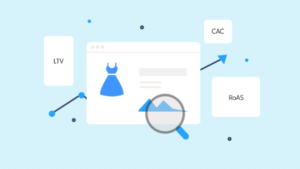Before we learn how to use inventory data in business, let us discuss its important use-cases.
Importance of Inventory Data in eCommerce
Reporting and analytics are essential to any eCommerce business as they are real indicators of all key indices in a business. Analyzing your data correctly enables you to make educated business optimization decisions around things like stock ordering, promotions, and staffing. E-commerce analytics refers to the process of examining large amounts of data generated by customer behavior on an online eCommerce platform to produce actionable insights. E-commerce generates complex, comprehensive datasets. Inventory data is a very crucial aspect for any e-commerce business for forecasting demand and planning supply; this greatly influences fund allocation and marketing budgets and thus is an integral part of E-commerce analytics. In this article, we will look at various use cases of Inventory Data.
Use of Inventory Data In Marketing
Product Listing Ads or PLAs are a type of ads that display more detailed information to users than standard text ads. Usually, information like the product picture, price, offers, and user ratings appear in these types of ads, and this makes them more user-engaging. This ensures better visibility, user engagements, click-through rates or CTRs, and ultimately better conversions. Also referred to as shopping ads, they can appear on various Google properties. Additionally, PLAs can also be run on other platforms as well like Facebook, and Instagram. Being a more engaging form of Advertisement means the ROIs are much higher in PLAs, and that’s why marketers love them.
Product listing ads use detailed information about the product based on a customized data feed, that uses real-time updates of various details like price, ratings, offers as well as inventory data. Google or any platform decides the impressions of the ads based on this data feed. Inventory data thus becomes Google gives a crucial part of this data feed as products that are out of stock or running low in stock have lesser priority in the PLA listing section. This means, if your competitors have better inventory stock than you, Google will show their Ads instead of yours when target audiences are searching for the product. It also reduces redundant ad impressions and clicks, reducing wastage of your Advertisement Budget. Thus the availability of updated inventory data becomes crucial when it comes to getting the most out of marketing campaigns.
Inventory Data for Website Product Listings
To stay in business, you need to track your inventory intricately. Inventory data is to be kept in sync with marketing activities and product listings to ensure customer satisfaction. The brand becomes negatively affected when a user clicks on an ad or an organic product listing only to find out that the product is out of stock or unavailable for their particular location. Thus, especially for large businesses having multiple stock points and logistical routes, it becomes crucial to ensure that the right amount of stock is available to meet user demand. This is where an effective analysis comes into play. Make sure that the listings appear to customers where the demand can be met or the listings come with an out-of-stock badge to establish the brand integrity in front of the user.
Challenges Faced In Omni Channel Sales
Omni-Channel selling involves creating a unified customer experience across all sales and marketing channels. It is a modern approach to commerce that focuses on designing a cohesive user experience for customers at every touchpoint. This differs from traditional marketing, where individual channels were optimized without necessarily considering the whole experience. The biggest challenge lies in the fact that the customers in various channels are always in flux; hence the inventory data needs to be consistent and transparent. Conflicts arise when inventory data is not synchronized and analyzed regularly, leading to an imbalance in supply and demand in a few sales channels and a poor customer experience that affects the entire brand.
How to Use Inventory Data effectively Using Daton?
Ideally, inventory data needs to be compared along with, sales, marketing, and customer feedback data. This ensures that the demand and supply are optimal, and budget allocation is done correctly, redundant listings are removed, and customers get a unified and satisfactory experience across various sales channels. This enables businesses to increase their revenue as a lot of the budgets allocated in different verticals are used in the best possible manner. For this process to be effective, this data analysis must be done regularly, and all of the data must be synced in real-time. Usually, people in charge of this analysis usually need to generate reports by manually downloading data from various sources. This compiling of reports is a difficult task in itself, and it takes much time to prepare reports which are then analyzed, based on which steps for improvement are taken. This time lag is one of the biggest challenges that companies face, as effectively they are losing money until necessary changes are identified and executed. Daton, the highly automated data pipeline created by Saras Analytics is ready to solve these conflicts with effective data integration from various inventory management systems like Vinculum, Olabi, Unicommerce, and different other marketing, sales, and customer support systems, without the need for writing a single line of code. This data can then be consolidated in real-time in a data warehouse from which it can be analyzed and fed to various Ad platforms such as Facebook and Google Ads. Sign up for a free trial to manage your Inventory Data effectively with Daton!













